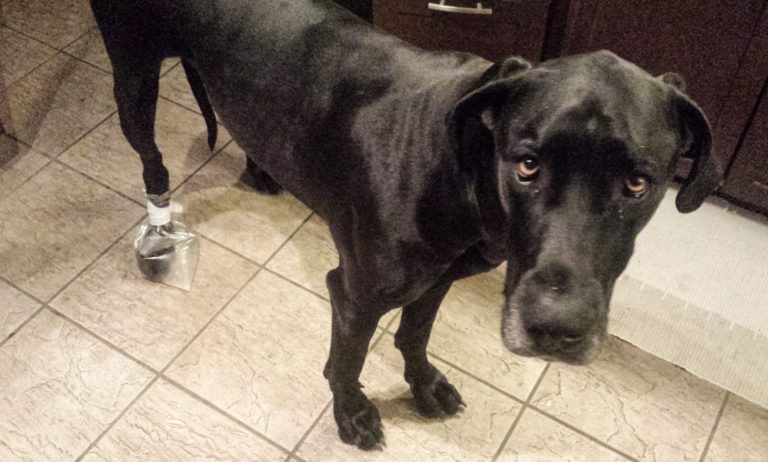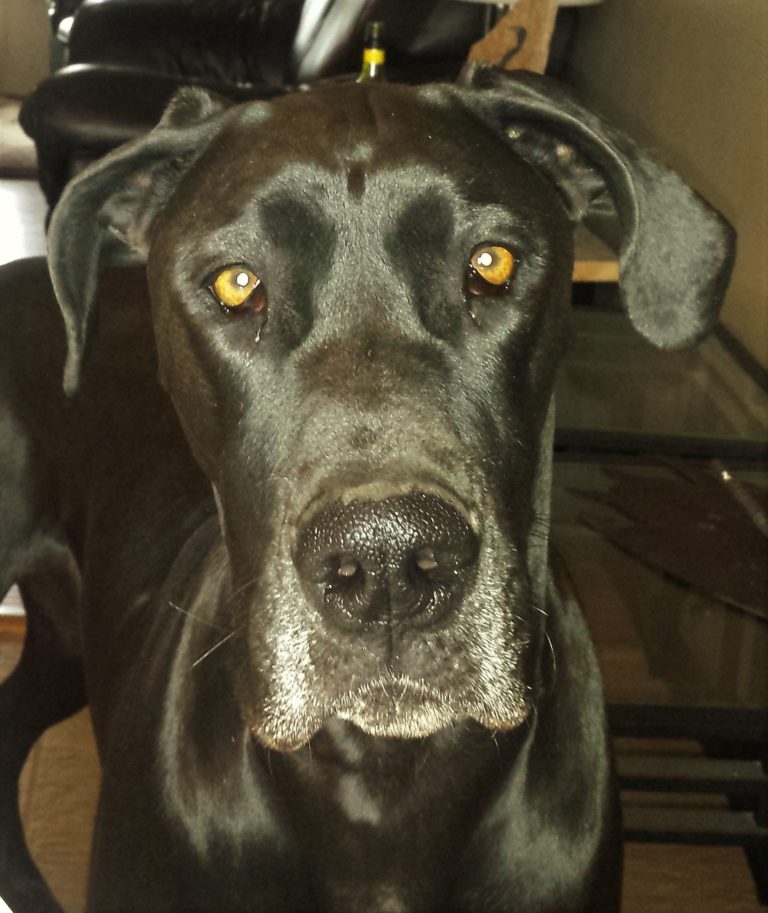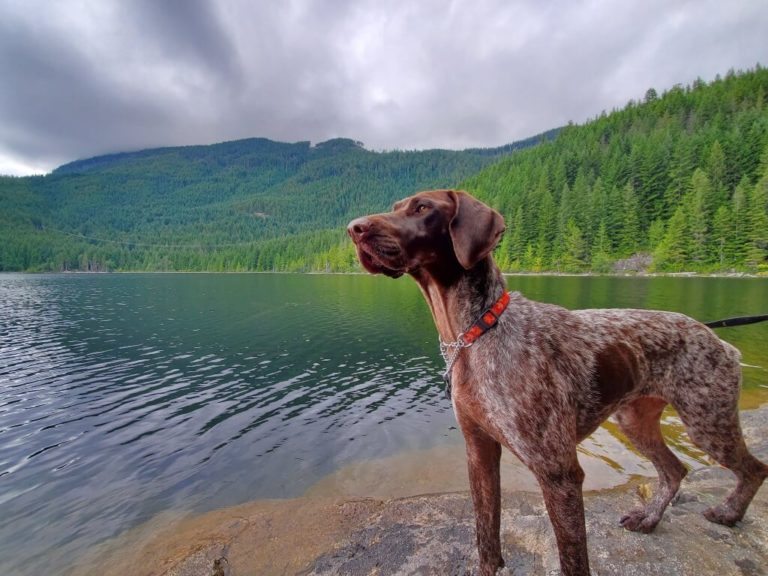CANINE ENRICHMENT FOR HIGH-ENERGY DOGS
This post may include affiliate links. As an Amazon Associate I earn from qualifying purchases. Find more info in my privacy policy.
Owners of high-energy dogs often fall into the trap of thinking that endless amounts of physical exercise is the one and only way to tire them out.
In reality, mental stimulation and activities that meet their inherent needs are just as important.
These activities fall under the realm of canine enrichment, which simply means things that provide enjoyment and stimulation in a species-specific way.
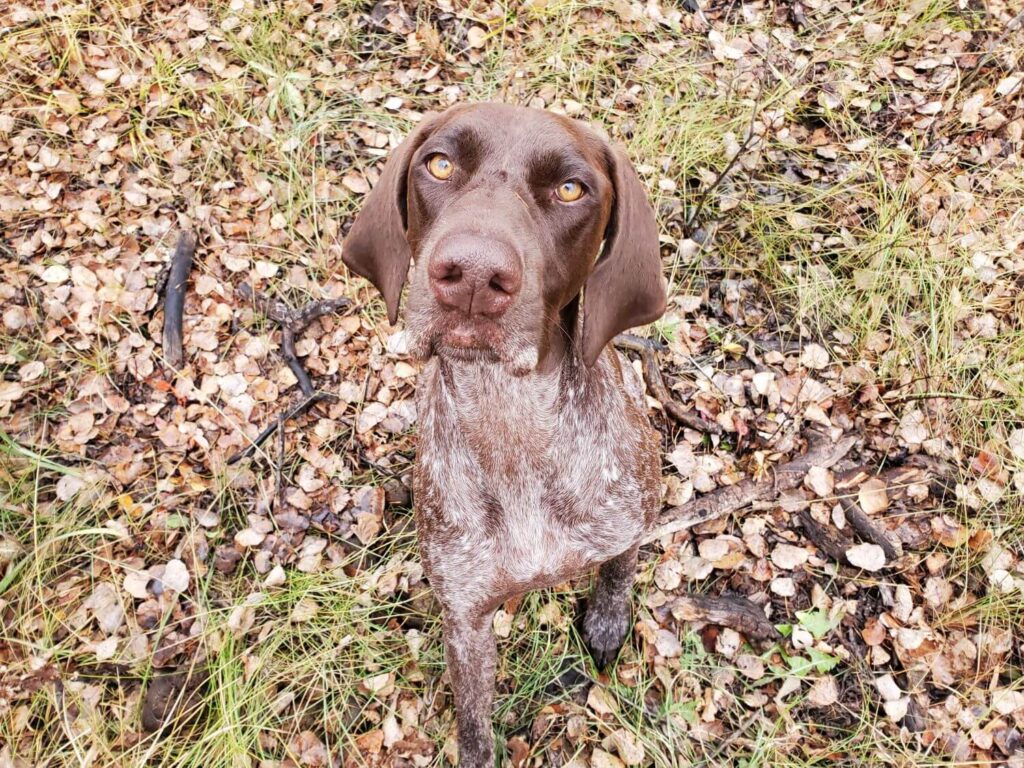
Basically, it’s aiming to let dogs be dogs and give them the opportunity to express their natural habits.
Anyone with a high-energy dog knows that boredom and not having their needs met can result in anxiety, depression, destructive behaviours, and other negative outcomes.
A combination of enrichment and physical activity will lead to a much happier, calmer, and well-behaved dog.
Here are my top five enrichment activities for high-energy dogs.
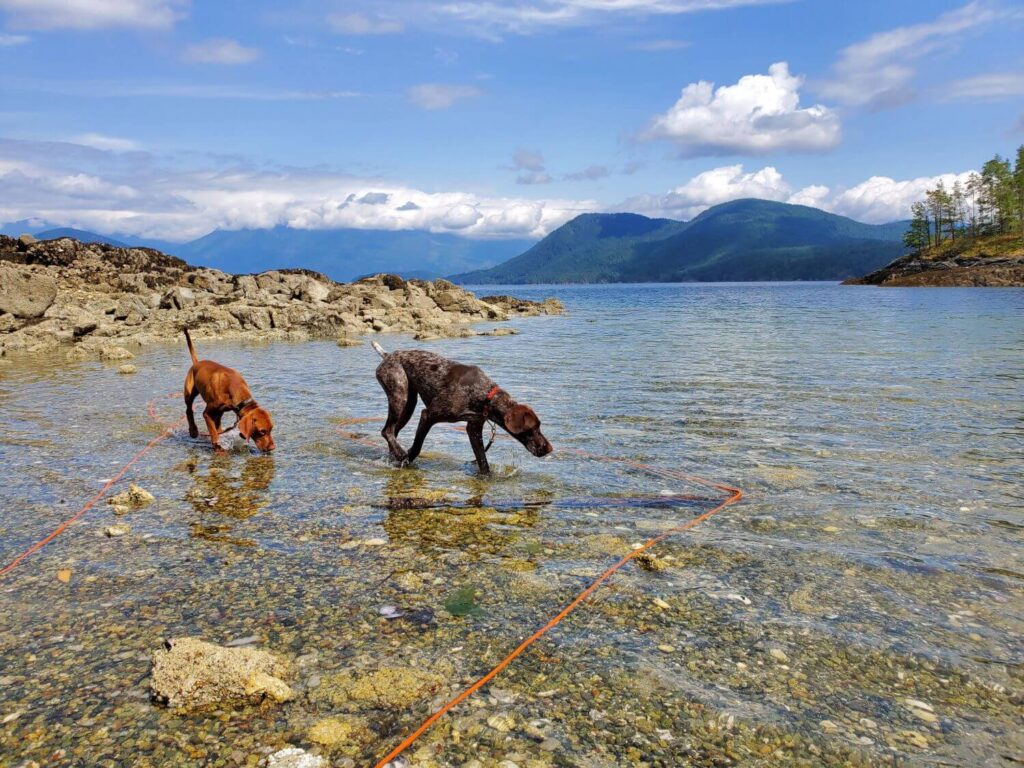
SNIFF WALKS
Most dog-walking advice out there will tell you how to leash train your dog, how to prevent pulling, and how to get them to focus on you 100% of the time. It’s a highly structured and human-controlled activity with little room for the dog to make their own decisions.
While these are all important skills for your dog to have and I always recommend leash training, there is a huge benefit to also allowing time for sniff walks.
Dogs see the world through their noses and expecting them to go for walks without stopping to sniff is incredibly restrictive for them.
A sniff walk entails allowing the dog to stop, sniff, change directions, and follow their nose. They essentially lead the way and get to explore whatever interests them.
These walks will often be slow, haphazard, and you may not cover much ground. Don’t go with a set distance or route in mind. Just let the dog lead the way.
Of course, you’ll want to keep your dog safe, so you may have to restrict where and what they sniff if it presents any hazards. Otherwise, let them set the pace and make the decisions.
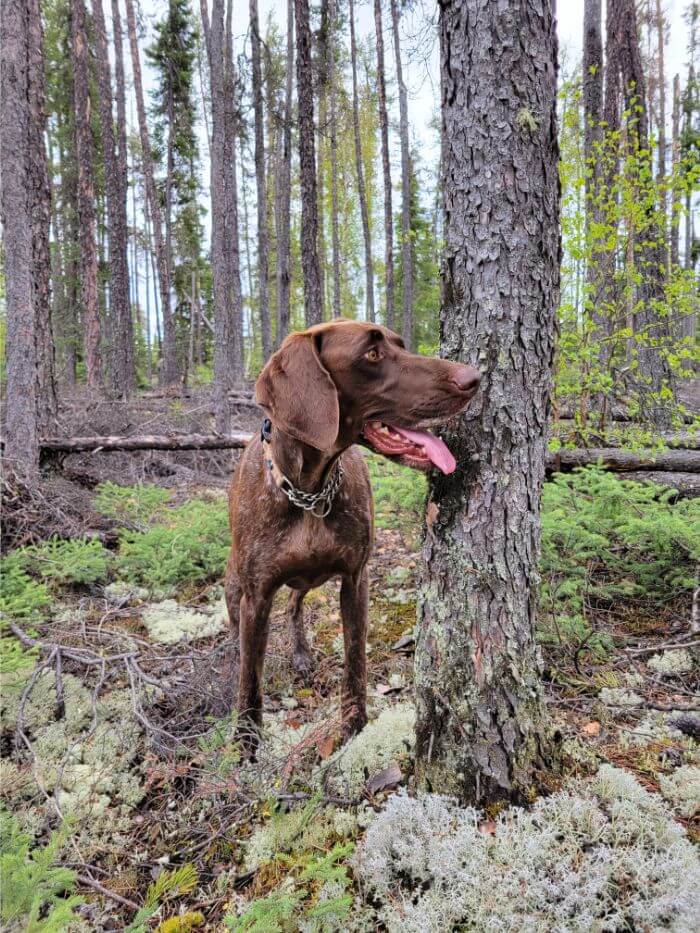
OFF-LEASH TIME
Off leash time can take sniff walks to the next level. Being off leash allows your dog to have total control over where they go and what they explore.
Not only can they sniff to their heart’s content, they’re also able to run around, change pace and express natural movements. This is great for them physically, but also gives them some major mental stimulation.
If your dog has a solid recall and good manners around people and other dogs, then any area that allows off-leash dogs is a good option.
For those with dogs who need a little more privacy and/or containment, an option might be to check out Sniff Spot and see if there are places available in your area.
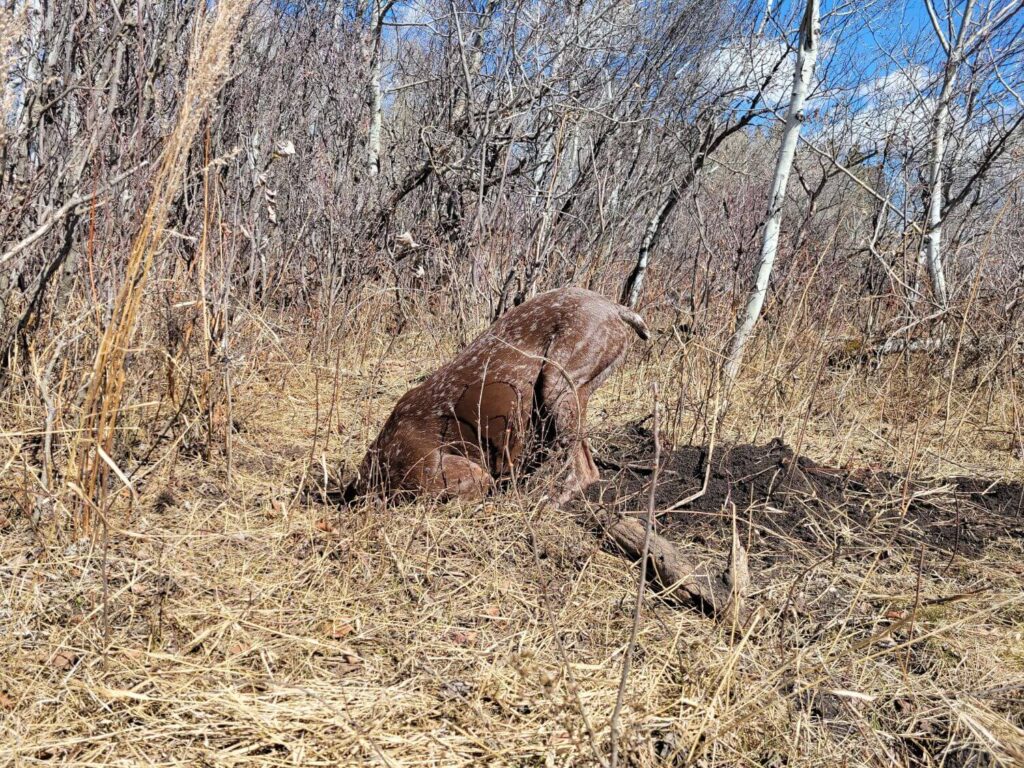
HIDE AND SEEK
Dogs have an inherent desire to seek out and find things. This action satisfies a very deep-seated part of their instinct and can have amazing benefits for them.
Since dogs are so nose-driven, hiding items and letting your dog sniff them out is an excellent brain game for them.
You can do this with treats, their favourite toys, or even their humans!
Simply place your dog in a separate room or in their kennel, hide the items, and then use a release word, like “go find it!”, to send them off searching.
This can also be a great opportunity to work on obedience skills by placing them in a sit/stay or down/stay while you hide the items (or yourself!) before releasing.
Hide and seek with two (or more) humans is another fun activity. Have the dogs stay with person 1 while person 2 hides. Once hidden, person 2 calls out “come find me!” and off the dog goes to find them. Meanwhile, person 1 hides and the process repeats.
Not only is human hide and seek fun, it also helps strengthen recall as the game reinforces the idea that coming to find their human is super fun and exciting.
Once your dog has the idea of the game down, hide and seek with toys, treats, or humans can be levelled up by practicing in increasingly distracting and challenging environments.
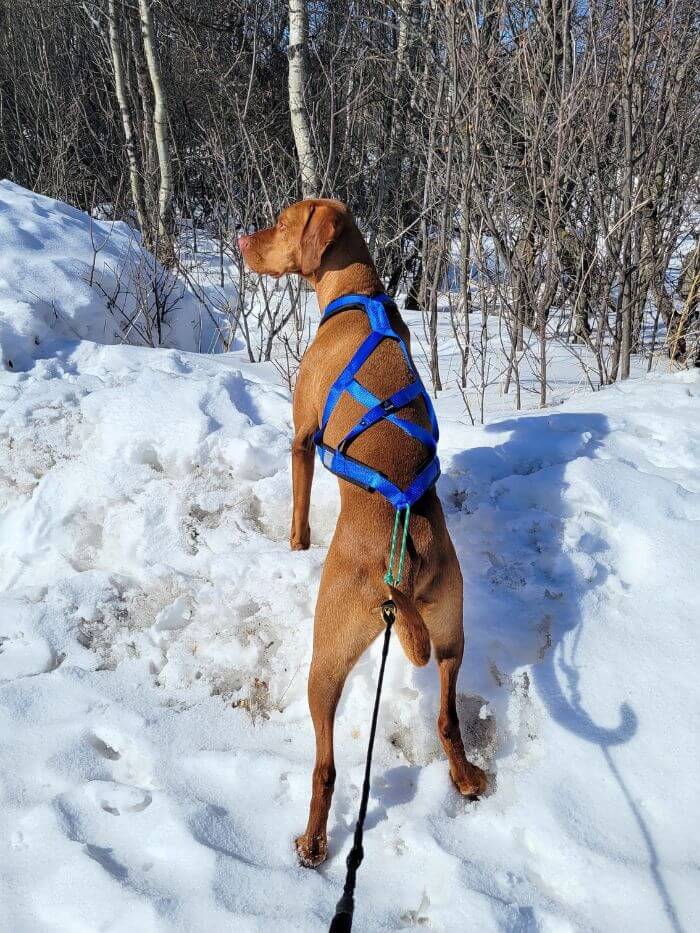
BREED-SPECIFIC ACTIVITIES AND DOG SPORTS
Most of our modern dogs originate from breeding for very specific skills and instincts. Hunting, herding, retrieving, or other breed traits may strongly influence your dog’s behaviour whether you do those activities with them or not.
Finding activities or dog sports that satisfy those innate behaviours can do wonders for your dog’s wellbeing.
Some examples include:
Retrieving breeds: fetch, dummy launchers, dock diving
Hunting breeds: scent work, fast cat, dig pits, barnhunts
Herding breeds: treibball, sheepdog trials, agility
Drafting breeds: canicross, carting, skijoring, bikejoring
Many of these activities can be DIY’d in your own backyard or done competitively or just for fun through organizations that offer dog sports in your area.
Of course, not every dog will fit into the box of what their breed was built for so be sure to observe your dog’s behaviour and match activities to their natural abilities and desires. Try different things and see what they respond to.
The key is to make sure your dog is enjoying themselves. Forced or overly structured activity can be stressful for them and is not enriching.
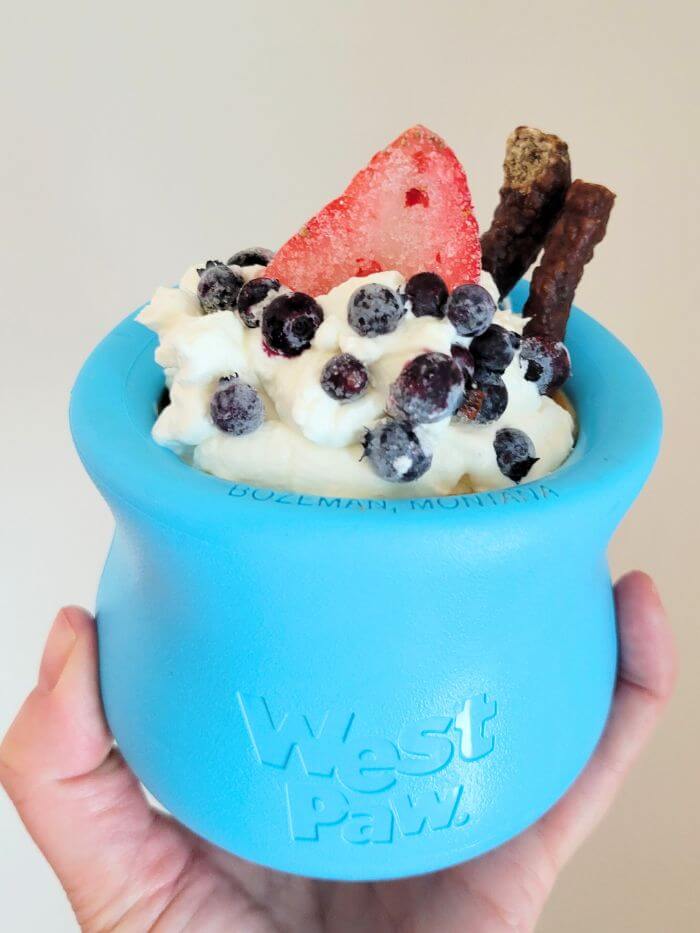
ENRICHMENT FEEDING
Enrichment-style feeding is becoming more and more popular among dog owners, and for good reason.
The actions of licking and chewing can be calming and soothing to dogs and provide prolonged entertainment.
Most enrichment feeding also has an element of having to search or work for the food which is also stimulating to dogs.
Enrichment feeding can be used to feed entire meals or for supplemental snacks and treats on occasion.
There are many enrichment products on the market. Some of the most popular ones include:
These products make it easy to prepare ahead by filling and often freezing so that you always have something on hand to combat boredom or to provide a distraction for your dog.
There are also DIY methods of enrichment feeding that do not require purchasing purpose-made feeders.
Scatter feeding can be done by simply scattering your dog’s food across the floor or in a yard. Rolling treats or food up in an old towel or hiding them in a box with packing paper can make a quick search-and-find feeder.
Dog-safe food items such as bell peppers can also be used as a fillable enrichment feeder which is then eaten along with the treats inside. Or if your dog likes to shred things, consider giving them a head of iceberg lettuce to destroy (this is an activity best done outside for the sake of cleanup).
Get creative and provide different feeders to keep things exciting for your dog.
A tired dog is a good dog and that goes just as much for their brains as for their bodies.
A happy, healthy, fulfilled dog needs physical activity and cognitive and environmental enrichment.
You’ll be amazed at what mentally stimulating activities can do for your dog to combat boredom, stop destructive behaviours, and improve their overall wellbeing.

